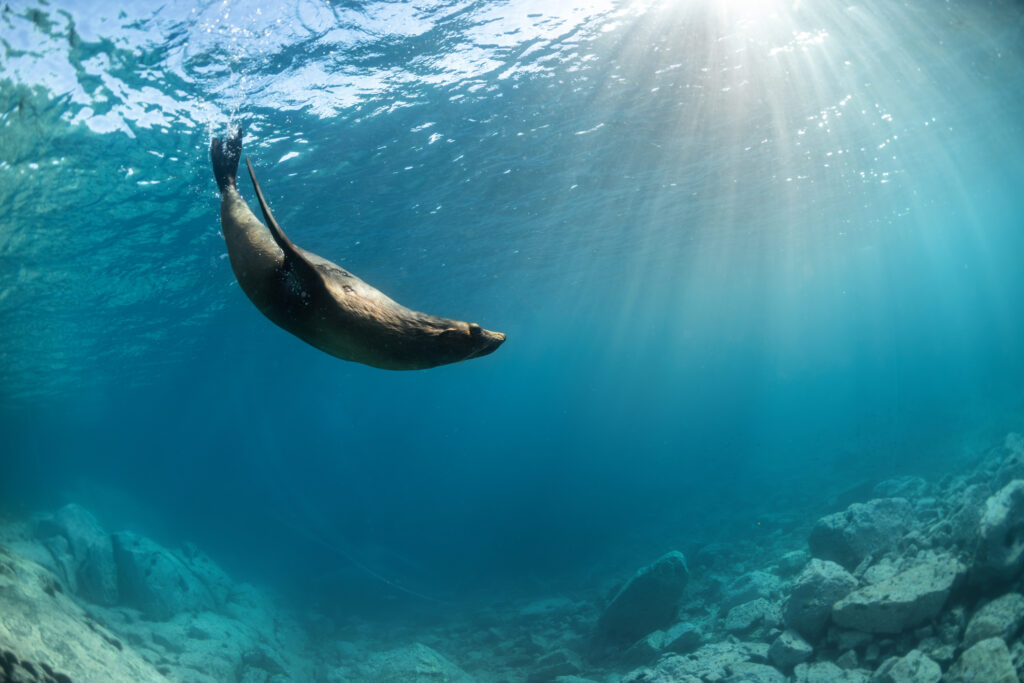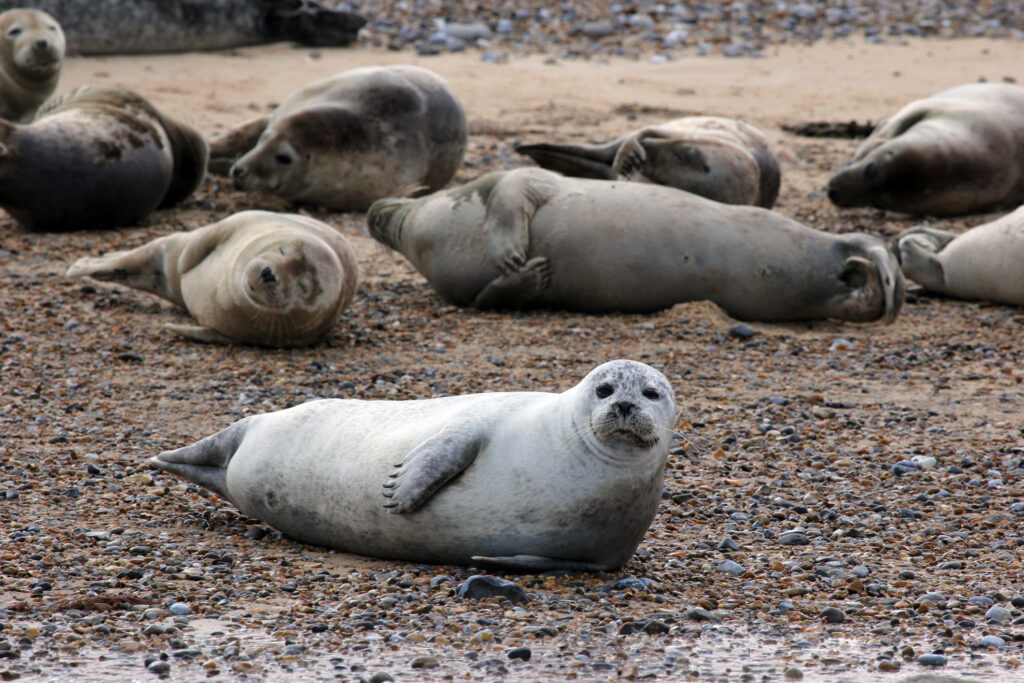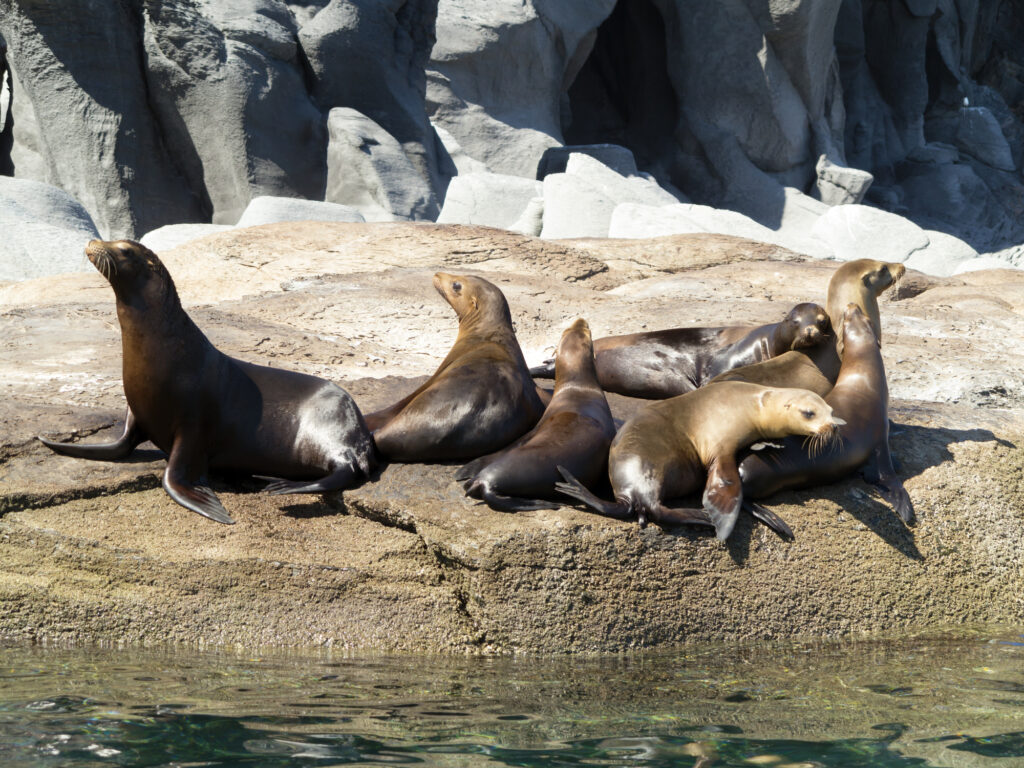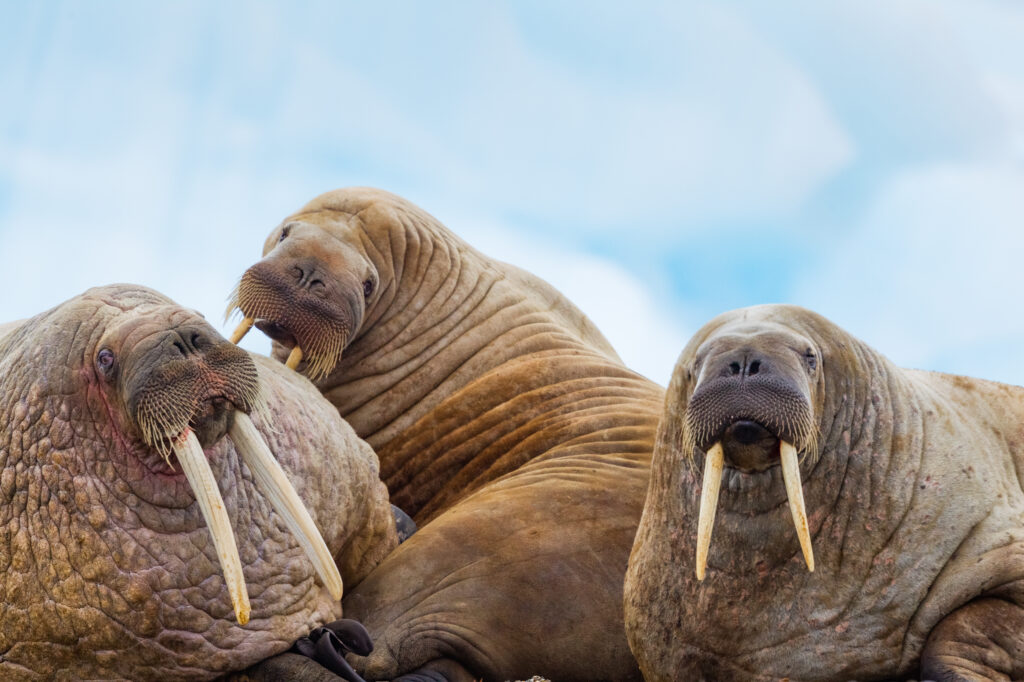Sitting there thinking, what is a pinniped? Well, you’ve stumbled across the right resource at the right time.
Here, we’ll be covering everything you need to know about what pinnipeds are and the animals that are classified as such, as well as the pinnipeds you can see at Tynemouth Aquarium.
What does the term pinniped mean?
The word pinniped comes from the Latin words pinna meaning “fin” and pes/pedis meaning “foot”. That should give you a big clue as to the type of animals that pinnipeds are.
None the wiser? The term pinniped refers to marine animals that have front and rear flippers, so it’s essentially another name for seals.
Yes, these flipper-footed marine mammals are officially known as pinnipeds, though, of course, it’s only really scientists who use the official name. As it stands, there are 34 extant (meaning existing) species of pinnipeds in our seas and oceans and a further 50 that have gone extinct; we know this by the fossils they’ve left behind.
Since pinniped basically means an animal with fins for feet, this is a pretty easy way to remember its definition. It’s worth remembering, too, that all pinnipeds live in water and land, with their unique feet used for both swimming and walking (though we must amid that they’re much better swimmers than walkers).

Which animals are classed as pinnipeds?
Right then, we’ve established that pinnipeds are seals but there is more to the story than that. Ever since German naturalist Johann Karl Wilhelm Illiger recognised pinnipeds as a distinct taxonomic unit in 1811, these creatures have been divided into three sub-families, including Phocidae, Otariidae and Odobenidae. So, while they may appear pretty similar, there’s plenty that sets them apart.
Let’s take a closer look at the key differences between these pinniped groups and their common characteristics.
Phocidae
Phocidae is a Latin word for earless or true seals. One of the primary groups of pinnipeds, this genus is also known as “crawling seals”, which helps to differentiate them from other animals in the Pinnipedia family.
All species of Phocidae are characterised by having no ears and small front flippers, which means they’re not the most mobile on land. There are 19 species of Phocidae in total, ranging from the Mediterranean monk seal (Monachus monachus) and the northern elephant seal (Mirounga angustirostris) to the harbour seal (Phoca vitulina) which you can see right here at Tynemouth Aquarium.

Here are some fast facts about Phocidae that you need to know…
Where do earless seals live?
Phocidae earless seals are typically found in cold waters, typically in the Atlantic, Antarctic and Arctic Oceans.
What do earless seals eat?
Since they can deploy one of four feeding strategies, including suction feeding, grip and tear feeding, filter-feeding and pierce feeding, earless seals have a wide diet ranging from small penguins and fish to filter-feeding fare like krill.
Otariidae
Otariidae are pretty similar to their Phocidae cousins with one obvious difference: they have ears.
Yep, Otariidae refers to eared seals, including the likes of sea lions (Otariinae) and fur seals (Arctocephalinae). These marine mammals do feature small ears on each side of their head, which is the most obvious way to identify them from their Phocidae counterparts.
Of course, there is one other difference to note between Otariidae and Phocidae, and that’s the fact that sea lions and fur seals can use their flippers much more like legs than earless seals. They have a more upright stance when travelling over land and are faster and more agile as a result. This also means that these animals spend much more time on land than true earless seals and that they’re not quite so streamlined or speedy in the water.

Let’s take a look at some other need-to-read facts about the Otariidae subfamily…
How many species of Otariidae are there?
There are 16 extant species of Otariidae, with the subfamily breaking away from other pinnipeds around 10 million years ago.
What do eared seals look like?
At first glance, Otariidae appear quite similar to their Phocidae cousins. But there are a few key differences to note, not least the addition of small ears and those elongated front flippers we mentioned earlier.
Where do eared seals live?
Eared seals have an impressive distribution, ranging from the Pacific to the Southern Oceans. They live in subpolar, temperate and equatorial waters, so you could say they’re slightly less choosy about water temperature than Phocidae. You won’t, however, find eared seals in the Atlantic Ocean.
What do eared seals eat?
Eared seals are skilled and aggressive hunters, and have a varied carnivorous diet including fish, squid, molluscs, crustaceans, and even sea birds.
Odobenidae
The final sub-family in the pinniped dynasty is the mighty Odobenidae, or the walrus (Odobenus rosmarus) to give it its common and scientific name. Unlike Phocidae and Otariidae, Odobenidae only has one extant species – the walrus – however, the group was historically much more diverse, with scientists estimating that we’ve lost around 99% of all other Odobenidae class animals.

With that in mind, let’s take a closer look at the sole remaining member of the Odobenidae family – the majestic walrus.
What is a walrus?
A walrus is a large pinniped class animal of the family Odobenidae. They’re the only remaining specimens within this class and certainly appear like something from the annals of history, with their large tusks and whiskers giving them a primordial appearance.
How many species of walrus are there?
While there is only one species within the Odobenidae family, walruses are split into two subspecies, including the Atlantic walrus (Odobenus rosmarus) and the Pacific walrus (Odobenus divergens). No points for guessing where these animals get their names!
What do walruses look like?
Walruses are one of the biggest species of pinnipeds in our oceans, second only to two species of elephant seals in the Phocidae family. A fully grown adult male Pacific walrus can grow up to 2,000 kilograms – 500kg more than the average car in the UK!
Walruses are best known for their large tusks, which protrude from either side of their mouths. These aren’t there for show but play an important role in a walrus’ anatomy, allowing them to break through sea ice, climb out of the water, and spar with rival males for mating rights during the breeding season.
Another physical characteristic that’s unique to Odobenidae are whiskers, or Vibrissae. These aren’t simply hairs but stiff bristles connected to a walrus’ muscles, blood supply and nerve endings, which enable them to detect prey better when foraging.
What do walruses eat?
Despite their large size, walruses prey on much smaller animals than other species of pinnipeds. This is mainly due to their impractically large tusks, which mean they would struggle to chew larger prey animals like larger fish, squid, and penguins.
Instead, walruses tend to eat smaller animals, including clams, snails, worms, sea cucumbers, and tunicates. They do eat a lot of these foods, however, with scientists estimating that a fully grown walrus eats around 5% of its body weight (or 100 pounds) of food each day.
Where do walruses live?
Since they’re covered in a thick layer of fibrous blubber, walruses can survive in extremely cold climates. As such, they tend to live in Arctic and sub-Arctic regions close to the North Pole, although they do often migrate further south during the winter months – as evidenced by the recent visit of Thor the walrus to the UK’s shores.
How long do walruses live for?
Walruses are a long-lived species of pinniped, with an average lifespan of over 40 years.
5 of our favourite walrus facts
- Walruses can run as fast as a human. When travelling on land, they run on all fours like a dog, which means they’re surprisingly quick and agile.
- Walruses have a top swim speed of 22 mph. That’s fast! Walruses may look a little ungainly but they’re elegant and strong swimmers, regularly hitting speeds of over 20 mph in the water.
- Both male and female walruses have tusks. That’s pretty rare in the animal kingdom and can make it difficult to tell them apart (although males are generally bigger).
- Walruses make great mums. They’re super protective of their young and have been known to pick their babies up with their front flippers when predators are close. Too cute!
- Walruses are highly sensitive to sound. Despite their size, they’re easily spooked and have been known to cause dangerous stampedes during their mass gatherings.
So there you have it – a complete guide to pinnipeds and all the incredible creatures this family of animals contains. Fancy seeing a pinniped in the flesh? Then stop by Tynemouth Aquarium, where our Seal Hospital presents the perfect opportunity to enjoy an up-close encounter with our native seals.
